Initial release date 1988 Genre Hack and slash | Mode Single-player video game | |
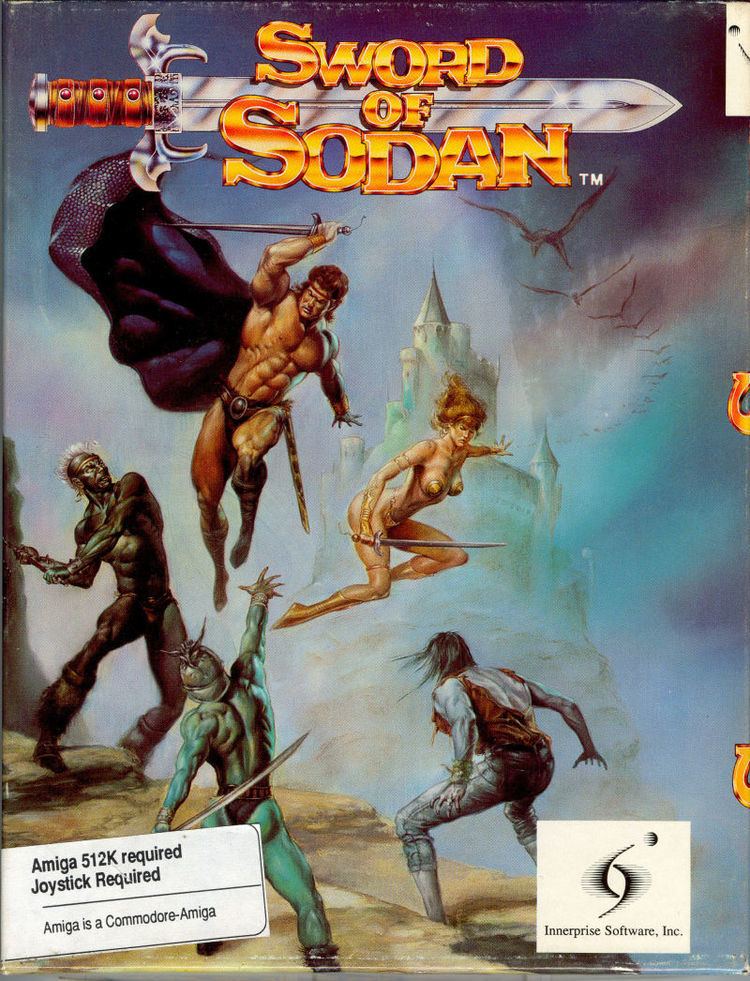 | ||
Designer(s) Søren Grønbech, Torben B. Larsen Similar Innerprise Software games, Hack and slash games, Other games | ||
The worst videogame ever made sword of sodan review
Sword of Sodan is a hack and slash video game released for the Amiga game system in 1989 by Discovery Software. In 1993 it was also released for the Apple Macintosh System 7 by Bethesda Softworks, and Electronic Arts released a scaled-down port version for the Sega Genesis in 1990.
Contents
- The worst videogame ever made sword of sodan review
- Plot
- Amiga
- Sega Genesis
- Development
- Unreleased port and sequel
- Reception
- References
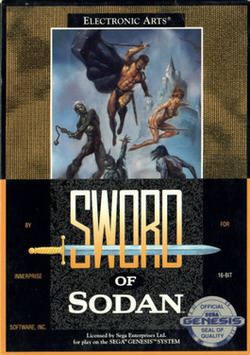
Plot
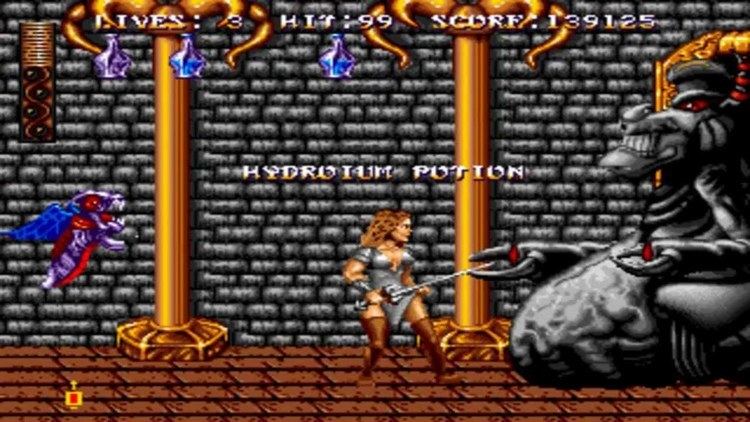
Set in a fictional medieval time, Lordan is the ruler of the northern kingdom. Zoras, an evil necromancer, is in his tower made of human bones, planning to make a second attempt to overthrow Lordan, after his first attempt was defeated by Sodan, the hero.
Zoras studied ancient parchments where he learned to experiment with long forgotten spells. His new knowledge enabled him to conjure all kinds of nightmarish creatures, which he sent marching towards Lordan's castle, leaving a path of death and destruction.
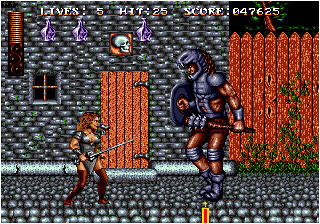
To protect his twin children, son Brodan and daughter Shardan, Lordan arranged for them to be taken from the castle across the Cthol mountains to the farthest corner of the land. After Lordan's defeat and death at Zoras' hands, his children were raised by an old, bitter man, who also trained them in the art of sword combat.
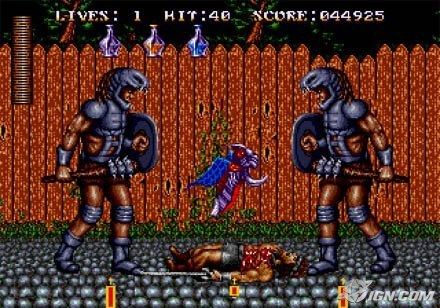
Before they start their journey to defeat Zoras, the old man hands over to them the sword of Sodan. Armed with the sword, they fight their way to castle Craggamoor and face the tyrannical Zoras. After they defeat Zoras, the people accept them as the true rulers and saviors of the land.
Amiga
There are two playable characters: Brodan or his twin sister Shardan, whose gameplay characteristics are identical despite their physical differences. The character walks in a horizontally scrolled world from left to right, defeating enemies with their sword, wielded either standing or kneeling. Though the player is also equipped with a shield, it is merely for decoration. It was completely removed from the Sega Genesis version.
Before each level starts, a map appears, showing the player's progress through the land on their way to castle Craggamoor. Scrolls give additional information about the current location. Once the player enters the castle, the map is replaced by a gloomy picture of an outside view of the castle. Most of the levels consist of simply fighting enemies with the sword, but sometimes the player must avoid traps or solve puzzles.
The player starts with five lives, an energy meter and a hit strength level. A player's energy is reduced every time they are hit by enemies, but their hit strength can be increased by using potions. There are different types of potions. Some increase hit strength, some give an extra life, some provide short-term invincibility, while still others kill the current opponent immediately.
There are eleven different areas, five in the area surrounding the castle, and six within. The player starts at their own city gate, and progresses through the countryside towards the castle, passing through city streets, a forest and a graveyard. Once within the castle, the player wanders through catacomb-like levels, which lead to the wizard's tower at the end. The world is inhabited by 13 different enemies and a single supporting character, the ostrich-like creature called "the animal".
Sega Genesis
While the gameplay mechanic is very similar to the Amiga version, there are several differences. First, enemies attack from both directions, instead of the single direction in the Amiga game. Second, the player relies more regularly on potions, which are also dropped more frequently. Third, the areas have been reduced from eleven to eight, with some completely deleted (e.g. the forest), while others combined. Finally, there are only eight enemies, as opposed to the thirteen in the Amiga game, however, the enemies are spawned more frequently, and in different areas.
Development
Sword of Sodan was created by three Danish engineers from Discovery Software in 1989. Two years later Innerprise Software created a scaled-down port of for the Sega Genesis system which differs in reduced graphics and sound quality, as well as notable changes in overall gameplay. The Genesis port was published by Electronic Arts. The game was again ported in 1993 by Bethesda Softworks for the Apple Macintosh System 7.
Unreleased port and sequel
A partially completed port for the Apple IIGS was advertised and shown at the CES Expo in 1989 by Visual Concepts, Ltd. Playable with a joystick, it was approximately 70% complete at that time. As progress continued, a three level self-playing demo was released and displayed in stores, virtually identical graphically and animation-wise to the Amiga version. However, a dispute arose between the Apple II programmer and Discovery Software, causing a delay while a replacement programmer could be hired. Eventually, a programmer was hired and development resumed. Despite these developments, ads appearing in magazines ads, and the game being included on vendor's price lists, it was never released. Ports for the Atari ST and the Commodore 64 systems were planned but never developed.
A sequel was developed but never released, however a single screenshot was shown in a magazine.
Reception
According to programmer Søren Grønbech's homepage, Sword of Sodan on the Amiga was at the top 10 selling charts for more than six months and selling about 55,000 copies. Due the violent nature of the game, it was indexed by the German BPjS/BPjM in 1989.
The original 1988 release for Amiga got mostly favorable reviews by the magazines, with praise for the graphics, which included large, detailed sprites, unusual for that time. However, the budget re-release in 1993 was met with negative reviews. For the Sega version, websites like I-Mockery.com or Somethingawful.com mocked the game for its bad graphics, annoying sound effects, frustrating controls and difficult gameplay.
Amiga 1989 reviews:
Amiga 1993 reviews (budget re-release):
Sega Genesis reviews:
In 2009, GamesRadar included it among the games with untapped franchise potential, commenting, "Though it looks and plays clunky now, it was a technical marvel at the time."
